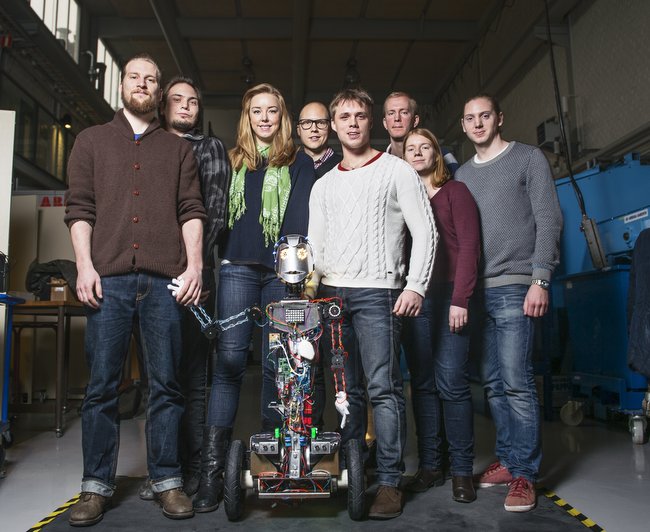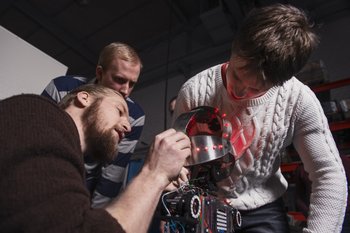Rocking robot pays tribute to Robyn
Pop star's engagement turned student project into unique experience
When a team of mechatronics students built a robot dedicated to Robyn, they didn't expect the pop star to become personally involved. The dancing "Robyt" makes its world debut this week and earns props from its inspiration.

A dancing robot might seem slightly impractical; but for a group of KTH mechatronics students who built one dedicated to Swedish dance pop artist Robyn, the idea is anything but.
Commissioned by KTH to build a robot dedicated to Robyn, the students not only generated hands-on interest from the singer, but they found themselves presented with a unique chance to experience the often challenging realities of product development.
Now complete after a year of work, the dancing humanoid, Robyt, will be officially unveiled at KTH on March 13 for an invitation-only audience of journalists and bloggers.
An annual assignment for a selected group of fourth-year students, the robot-building project typically goes unnoticed outside of the mechatronics programme. But this year was different.

“When we started, we wanted to use Robyn’s music in order to get her attention for the project,” says Elias Flening, one of nine students on the team that built Robyt.
“But then Robyn contacted us.”
The singer took a personal interest in the project and came to KTH to meet with the students on two occasions, to share her ideas about how the droid should look and behave.
Robyn’s influence is evident in the finished product, which required doing things a little differently, says team member Kim Öberg. “We were building in more than just a mechatronic way,” she says. “It had to be built so that onlookers would actually think it’s dancing, in a way that they could actually relate to it.”
Robyt’s arm and head movements are activated by the pulse of any musical playback, though the team relies solely on Robyn songs to initiate the dancing. The unit’s wheel base rocks back and forth rhythmically to compensate for the movement of the arms, with the result that it has on occasion toppled over.

Not that Robyn seemed to mind. The finished product has earned the singer's stamp of approval.
"I love when the robot goes overboard with the rocking back and forth,” says the pop star. “I wish it could do that and not fall over – it´s so cool!”
“Some of the sequences in the dancing are really suggestive and unexpected and that gets me going. But my favourite move right now is probably the head nodding,” Robyn says.
When Robyn first witnessed the robot in action, she was struck by the way the arms trembled when they moved – a characteristic that the team did not like. “But she said she found it so endearing, and that it makes it more human,” Öberg says. “That was an eye opener. We got to see our product from a completely different perspective.”
The singer not only had ideas about the locomotion, but the look and feel of the unit.
Flening points out that Robyn also favoured leaving the internal wires and mechanics exposed, a rather unusual design choice for a system that has moving parts. “She said that it told an interesting narrative about the robot as a character,” he says.
Robyn’s interest led to widespread media attention, which Flening says created even more pressure for the team to deliver. “That’s a good learning experience because usually you have just your teacher who will judge the final product. Now we have other stakeholders involved and that is closer to real life,” he says.
Öberg, who eyes a future in product development, says the project provided valuable lessons. “We worked with the kind of requirements you’ll be faced with in product development because they tend to be open and not really refined,” she says. “You’ll get an idea from the customer but it’s up to you to specify what that means in hard requirements.”
Getting from the idea of a dancing robot, to specifying the hard requirements took about three months of work, she says. “When we worked on the final report, we realised it was a huge amount of work translating ideas into hard requirements.
“Robyn was one of our clients in a sense. You wanted her to like it,” she says.
David Callahan